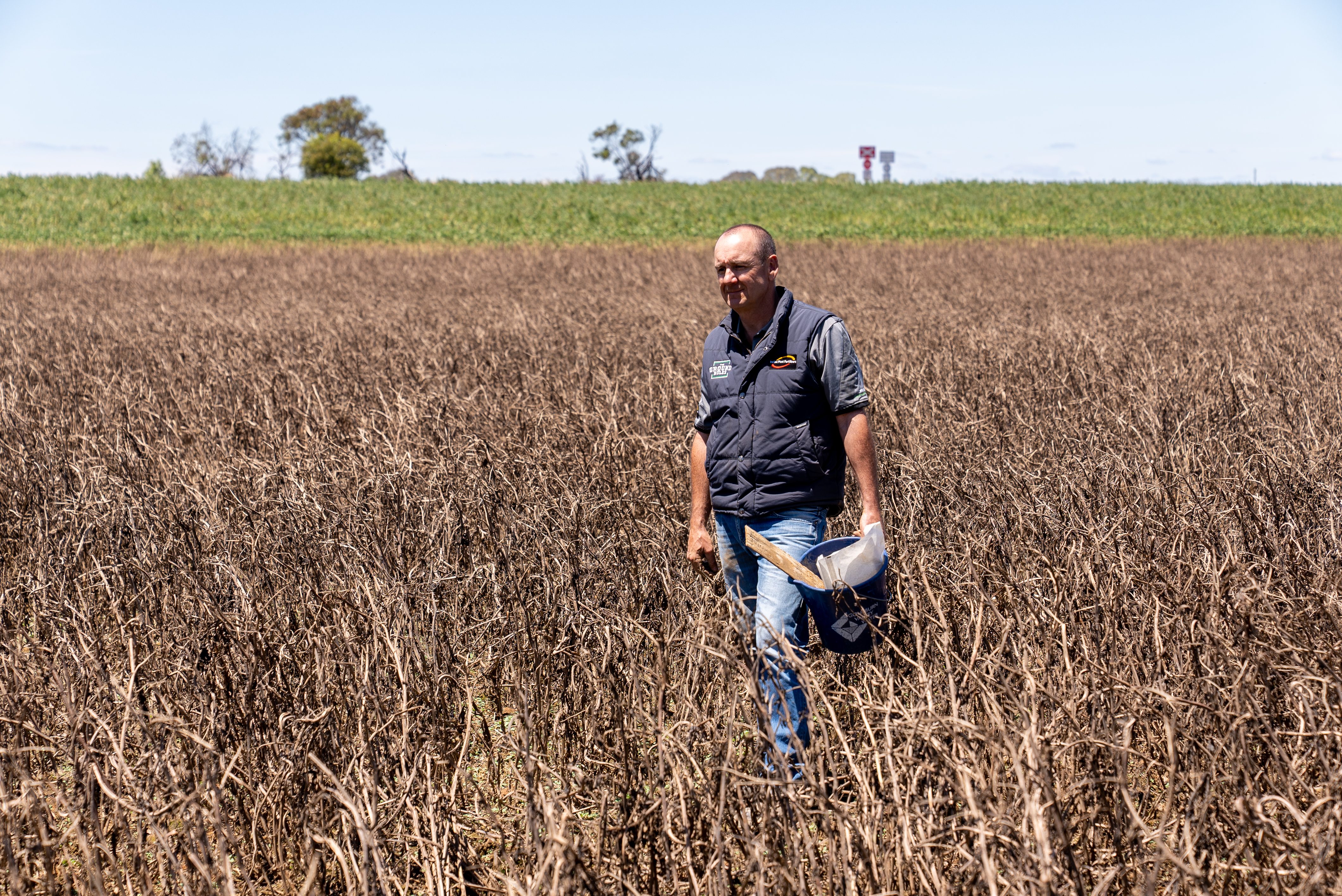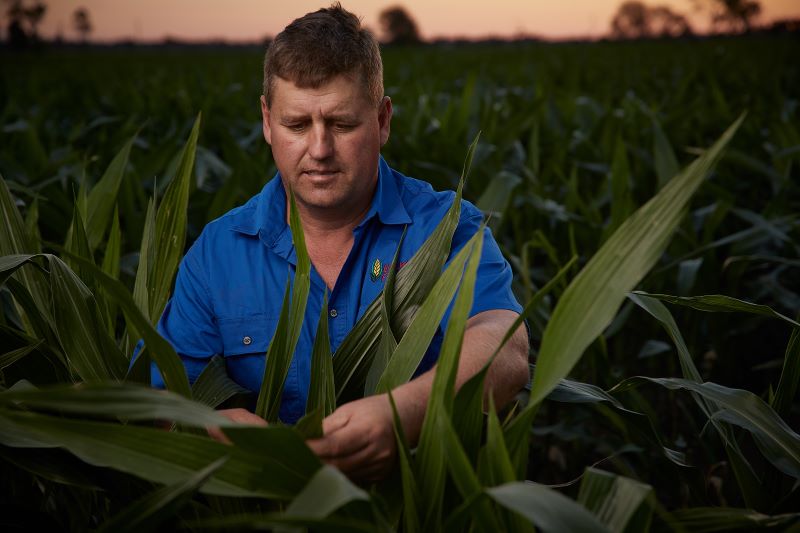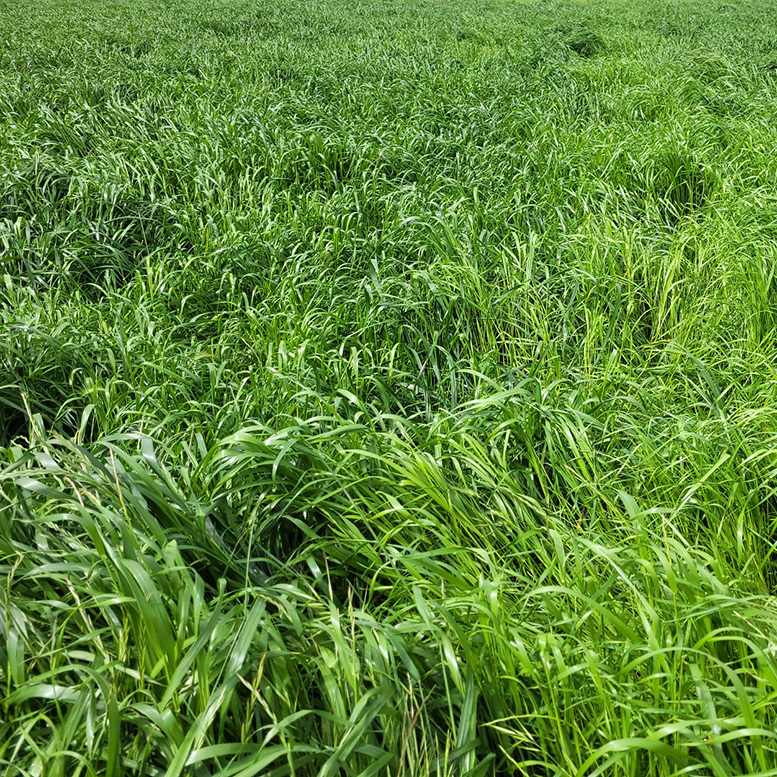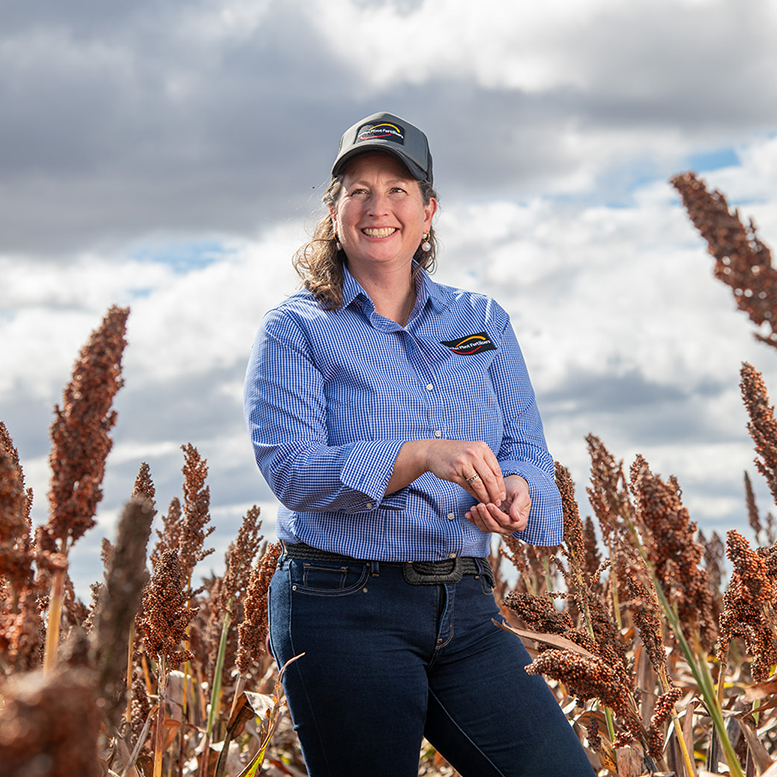Agronomic Insights

What’s left after the 2022 flooding events, and how do we best manage these areas in coming seasons?
Lee Menhenett – IPF Technical Agronomist
No two floods are the same. Water depth, speed and length of inundation all influence crop or pasture survival rates, recovery times and the fate of nutrients in remaining plants and soil.
The Effect of Flooding
Five things can happen during a flood:
- Erosion and the loss of topsoil and organic matter, resulting in loss of nutrients including phosphorous, potassium and trace elements;
- Deposition of silt, gravel and weed seeds. Silt deeper than 10 cm can also kill plants;
- Leaching and movement of mobile nutrients (such as nitrogen and sulphur) beyond the root zone;
- Denitrification – the loss of nitrogen as N2 (di-nitrogen) and N2O (nitrous oxide) gases;
- Three or more days of complete submergence can lead to the death of pasture and crops due to lack of oxygen.
As a result, when preparing paddocks and making nutrient application decisions after a flooding event, it’s important to understand the following:
- What nutrient loss has occurred (nitrogen and sulphur)?
- Have these mobile nutrients been moved deeper in the soil profile?
- Has soil biology been negatively affected?
- Has soil structure been affected?
- What is the nutrient value of remaining plant material, and is there benefit in retaining it?
- What fertiliser strategy should be employed for phosphorus and potassium?
Goulburn Valley, Victoria Testing
To gain an understanding of some of these issues, several shallow and deep soil tests and leaf tissue tests were taken in the Goulburn Valley to assess soil health and nutrient concentration. A major flood event occurred in the region in mid-October, leaving paddocks inundated for up to a month. Sampling was conducted in early-December as soon as paddocks were accessible post flooding, to minimise the influence of nitrogen mineralisation on the results. Given the period of inundation, pasture and crops had died, leaving residual plant stems with some leaf material.
Soil – Nitrogen and Sulphur
Nitrogen and sulphur are mobile nutrients in the soil and will move in soil moisture. The relative hydraulic conductivity of a soil will determine the rate of movement through the soil profile. Moisture will move at a greater rate through lighter soil types like sands and sandy loams, hence movement of nitrate nitrogen and sulphate sulphur. Typically, flood plains soils are composed of silt and clay, minimising rapid and mass vertical movement of moisture (and mobile nutrient).
The Goulburn Valley is predominantly composed of duplex soils (loam over clay), so moisture movement is restricted deeper in the soil profile. Coupled with heavy soils and greater bulk densities deeper in the profile, sodium and magnesium can also increase on cation sites, further decreasing moisture movement due to poorer soil structure. Therefore, it is assumed that nutrient leaching losses in flood affected paddocks is negligible.
Graph 1 and Graph 2 show nitrogen and sulphur levels in the soil including the depth where accumulation is occurring. Interestingly, sulphur increases with increasing soil depth whereas nitrogen levels decrease with depth. This could be because most systems are running a negative nitrogen balance. Three of the paddocks have very high sulphur levels (>235 kgS/ha) due to previous gypsum applications.


Another way nitrogen (not sulphur) is lost is through denitrification. Most denitrification gas losses occur as N2 (N2 comprises 78% of the air we breathe) with losses significant under anaerobic soil condition, at higher temperatures in the presence of a carbon source.
Essentially soil bacteria consume oxygen associated with nitrate nitrogen, liberating N2 gas. The extended duration of flooding in October and November 2022 would have caused some nitrogen losses through denitrification. The extent of these losses is very difficult to assess.
Paddock Comparison
Two paddocks (Barley and Faba Bean 2) had areas that were not inundated. Soil and tissue samples were taken from the flooded and not flooded areas, to determine any nitrogen variations. There are some deficiencies in this approach such as variation in topography, soil type and initial nitrogen values, however it provides a reasonable comparison.
For both paddocks there was more soil-nitrogen present in flooded areas of the paddock. But when the nitrogen from the above ground plant material was added (Table 1) the Barley paddock had 21 kgN/ha more compared to the non-flooded area, whereas the Faba Bean 2 paddock had 140kgN/ha less nitrogen in the flooded area.

This highlights two important points. Firstly, it would appear nitrogen losses on the barley paddock were minimal whereas the Faba bean paddock has a large amount of nitrogen unaccounted for. The Faba bean paddock had a deep soil sample taken in May showing there was 63 kgN/ha, so there has been a net increase in soil-N through mineralisation and potentially N fixation. Most of the nitrogen from any fixation from the Faba bean crop would most likely be in the form of organic N and not measured.
Secondly, the loss of N between the Faba Bean 2 flooded and non-flooded areas is mostly due to the loss of plant material (including grain). In the flooded areas some leaf material was washed away and the plants died, effectively stopping N fixation and supply to above ground plant material. How much of the nitrogen variation is due to N fixation and plant accumulation or denitrification is undeterminable.
Soil Health
A soil health assessment was conducted on several paddocks to determine if the flood event had any negative effect on key soil health parameters. Soil Health is an add-on test package at Nutrient Advantage® that has four components:
- Total carbon & nitrogen & C:N ratio (combustion)
- Aggregate slaking and dispersion (Loveday & Pyle)
- Active (labile) carbon (0.033M KMnO4)
- Microbial respiration (1 day Solvita CO2 burst).
Table 2 highlights the results from each paddock. The green cells indicate optimal ranges, orange cells are less than optimal.

Soil structure across all paddocks was sound, with no slaking and only one pasture paddock slightly dispersive with an exchangeable sodium percentage (ESP) of 8%. This paddock would respond to a gypsum application during the pasture renovation phase.
Microbial respiration (CO2 Burst) is a measure of carbon dioxide respiring from soil microbes. Low respiration indicates less soil microbial activity that could be associated with poor soil structure, salinity, acidity or low nutrient and carbon status. The results indicate that generally microbial activity decreases where carbon and nitrogen values are lower.
In each of the two paddocks where flooded and non-flooded areas could be sampled there was a decrease in microbial respiration from the flooded samples. This indicates that extended periods of flooding could negatively affect microbial populations.
Visually, the soil surface on all flooded paddocks looks friable with no negative affects like soil compaction from the weight of flood water, or silt deposition or soil erosion. No dispersion or slaking on these paddocks has assisted in maintaining soil structure. Direct drilling new crops or pasture will be suitable for establishment, or at most a light multidisc may be required.
Nutrients in the Remaining Plant Material
Whole top samples were taken for leaf tissue analysis in addition to dry matter cuts. The nutrient levels were calculated using both the nutrient concentration of the plant material above ground and the dry matter yields, as shown in Table 3.

This table demonstrates there is still a reasonable amount of nutrient contained in the flooded plant material. Therefore, it is worthwhile retaining this material to cycle the nutrients through subsequent crops. If burnt, most of the nitrogen and sulphur will be lost and other nutrients will also be lost if any ash leaves the paddock .
The remaining plant material is quite brittle so harrowing, mulching or even a light multidisc should be enough to allow seeding operations in the autumn.
Interestingly, the flooded plant material has very low potassium concentration.
- Pasture 0.17% K
- Wheat 0.19% K
- Barley (not flooded) 1.6% K
- Barley (flooded) 0.24%
- Faba Bean 2 (not flooded) 1.9% K
- Faba Bean 2 (flooded) 0.74%
Potassium leaches from plant material readily, so the flood water has obviously stripped out significant amounts of potassium.
Managing Nutrient Inputs for the Coming Season
If plant material can be retained, then effectively there has been little to no loss of nutrients from the system. If there has been some soil deposition, then there could have been a net increase in some nutrients. If erosion of topsoil has occurred, then significant amounts of nutrients may have been lost.
While leaching losses of mobile nutrients can be ruled out, losses of nitrogen through denitrification could be significant – although through this sampling exercise I believe losses have been relatively low. This could be in part due to the timing of the flood event. By mid-October flowering was complete, and the crop was in an early grain fill growth stage. Most of the nitrogen would have been recovered from the soil, leaving lesser amounts of nitrate nitrogen to be lost to denitrification.
These soil and leaf tissue samples show some clear trends, however there are also plenty of anomalies. The only way to really determine a sound fertiliser strategy is to undertake a planned soil sampling regime across paddocks. This may entail shallow (0-10cm) and deeper (10-60+cm) soil samples, preferably segmented. Samples should target zones based on soil type and fertiliser history and in the case of flooding – flooded and non-flooded areas. Gathering more information will allow for better management decisions.
The flooded areas may not have supported the bottom line in 2022, but with good weed control, stubble retention, and nutrient applications, extensive moisture reserves in these areas could see them become the best performing in 2023.
Further Information
If you have any queries or would like to discuss, please contact me at lee.menhenett@incitecpivot.com.au or 0412 565 176.
Resources
Download InsightDISCLAIMER
This is a guide only, which we hope you find useful as a general tool. While Incitec Pivot Fertilisers has taken all reasonable care in the preparation of this guide, it should not be relied on as a substitute for tailored professional advice and Incitec Pivot Fertilisers accepts no liability in connection with this guide.
Incitec Pivot Fertilisers manufactures and sources fertilisers from other suppliers. The fertiliser supply chain extends beyond the company’s direct control, both overseas and within Australia. Incitec Pivot Fertilisers hereby expressly disclaims liability to any person, property, or thing in respect of any of the consequences of anything done or omitted to be done by any person in reliance, whether wholly or in part, upon the whole or any part of the contents of this article.





